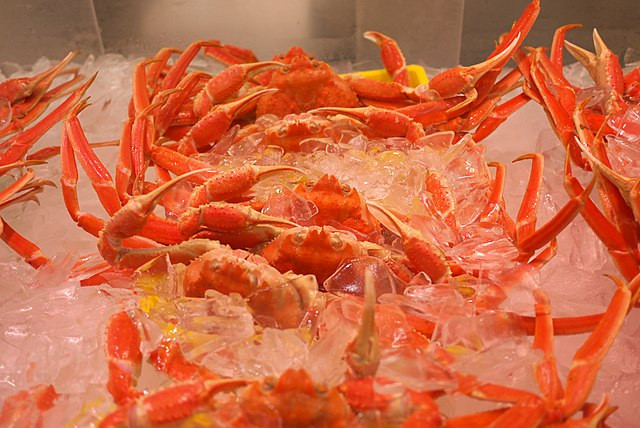In a revelation that has sent shockwaves through the seafood industry, researchers have uncovered the likely fate of billions of snow crabs that vanished from the waters surrounding Alaska. Warmer ocean temperatures have been pinpointed as the culprit, leading to the starvation and death of these vital crustaceans.
The National Oceanic and Atmospheric Administration (NOAA) unveiled findings this week that draw a disturbing connection between the recent marine heatwaves in the eastern Bering Sea and the abrupt decline of snow crab populations recorded in 2021 surveys. Cody Szuwalski, the NOAA study's lead author, conveyed his shock at the data, stating, "When I first saw the 2021 survey data, it was a jaw-dropping moment. There was hope it might be an anomaly, but 2022 confirmed our worst fears."
This environmental mystery's unraveling comes on the heels of the Alaska Department of Fish and Game's recent announcement that it would be canceling the snow crab harvest season for a consecutive year due to the alarming disappearance of the creatures from the Bering Sea.
While overfishing had been considered an initial potential cause, experts have clarified that this term is a technical definition invoking conservation measures and doesn't directly address the actual reasons behind the population's sharp decline. Szuwalski commented, "Historically, our main concern was overfishing. But climate change is upending our models, expectations, and strategies."
Snow crabs, which primarily thrive in waters below 2 degrees Celsius, face an uphill battle when temperatures rise. The warmer waters have disrupted their metabolism, amplifying their dietary needs. Researchers estimate that during the marine heatwave in 2018, the crabs' energy requirements might have surged fourfold from the previous year. But as the heat impacted the Bering Sea's food chain, the crabs struggled to find adequate sustenance, leading to widespread starvation.
Adding another layer of complexity to the issue, Kerim Aydin, a co-author of the study, indicated that other species, including the Pacific cod, exploited the crabs' vulnerable state. Typically shielded by cold temperatures, the crabs found themselves within reach of these predators due to the anomalous warmth. "This was more than a mere heatwave effect," Aydin noted, "This heatwave resulted in a cascade of events that culminated in significant starvation and predation."
The Arctic region, as scientists have long warned, is heating up at a pace almost quadruple that of the rest of the globe. With the Bering Sea seeing drastic reductions in sea ice, this amplifies the broader effects of global warming. Speaking about the unprecedented changes in sea ice, Szuwalski highlighted, "2018 and 2019 were landmark years in terms of sea ice in the Bering Sea. Whether this is the new normal remains to be seen."
Szuwalski further emphasized the urgency of addressing the climate crisis, which is impacting both the environment and people's livelihoods. "We knew changes were coming, but the rapidity of these changes has been staggering. The long-term outlook suggests snow crabs might migrate northward with the receding ice, leaving the eastern Bering Sea with a diminished presence of this once-abundant species."
The fate of Alaska's snow crabs serves as a stark reminder of the profound and often unpredictable consequences of a changing climate, affecting ecosystems, industries, and communities around the world.






